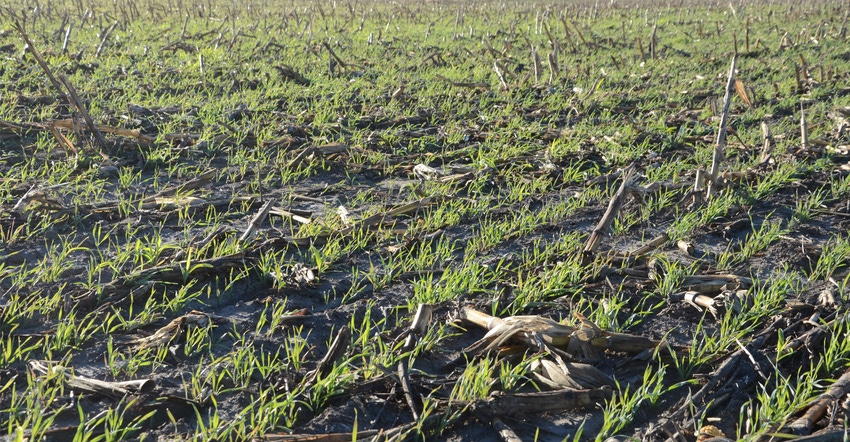
In a previous column, I discussed different carbon terms widely used in creating a carbon market policy and the development of a scientifically based carbon credit market. One of these terms is “baseline,” which is the essential first step to establish credible, high-quality carbon credits that are tradable — and to meet the other requirements of a carbon-offset program, the “additionality.”
Now, to dive into the concept of a soil carbon baseline, which can be very technical. It needs to be approached carefully to understand different approaches, which are used by many who are working in the soil carbon discipline. It is important to establish an accurate carbon baseline for fields prior to implementing new practices.
It is important for farmers for the following reasons:
It establishes a good data baseline about the soil organic carbon (SOC) content of their fields.
It provides data that can be used for developing a better soil and nutrient management program.
It can help farmers fine-tune their cropping system and to think about potential changes that stabilize and enhance soil carbon and soil health.
It provides good record-keeping and documentation of farm management practices for future use.
Field evaluation
Prior to implementing a soil-sampling protocol for determining potential SOC sequestration that involves different management practices and cropping systems, it is essential to evaluate the field carefully. Sequestration of SOC depends on the interaction among soil, plant and atmosphere. Therefore, soil differences can affect plant performance, productivity and biomass production, which are the main contributors to SOC input in the soil.
Also, understanding the history of the field, such as manure application, other organic amendments and chemicals such as lime applications, is critical to be accounted for in the carbon quantification and development of a pretreatment carbon baseline. The use of a soil-sampling grid that accounts for surface variability and for below-soil-surface variability within the root zone will provide a more accurate accounting for SOC stock changes or retention.
Approaches for establishing baseline
There are two different approaches that have been used to establish a baseline to determine SOC gain by implementing certain conservation practices, such as no-till, cover crops, prairie strips, etc. The objective of carbon credit programs is to produce accurate and quality carbon credits, especially in agriculture land, which is based on CO2 removal from the atmosphere. To ensure quality of carbon credits, a reliable accounting approach must be used by an establishing credible carbon content pretreatment (prior to implementation of conservation practices) baseline.
The two approaches used in establishing a baseline for SOC sequestration are:
Pretreatment soil carbon baseline, which simply means soil-sampling the entire field prior to implementing any conservation practices, following a well-developed sampling protocol.
The pair comparison method, which means soil sampling after the establishment of conservation practices on certain areas in the field, and to use a conventional treatment as a baseline. For example, conservation tillage (i.e., no-till) compared side by side with a conventional tillage system (i.e., chisel plow), where conventional tillage is used as a baseline.
The pair comparison is used with the assumptions that the soil carbon concentration under conventional tillage is stable, and ignoring the continuous change in soil carbon concentration over time in both systems.
To illustrate the differences between the two approaches in determining SOC sequestration or gain, here is an example of comparing the pair method to the pretreatment-baseline. In the pair method, conventional tillage SOC concentration is used as a baseline, where no-till showed a gain of 400 pounds SOC per acre per year. However, when both no-till and conventional tillage were compared to a pretreatment baseline SOC, the result showed that no-till retained only 87% (lost 13%) of its SOC, while conventional tillage lost 30% of its carbon during the 20-year study — which means the conventional tillage was still losing significant carbon and did not reach stable status.
This example was in the same plot area of the study, which highlights the differences between the two methods. It suggests that the pair comparison method is overestimating, since the conventional tillage treatment was still losing SOC at a greater rate, and it is not at a steady or stable state during the 20-year experiment. The SOC stocks present in the soil at the end of a project under conservation practices must be greater than that of the pretreatment-baseline SOC stocks level in the same land unit. This gain is referred to as additionality.
Standardization needed
There is a significant need to develop a standardized approach or protocol for SOC sequestration; a uniform approach using a pretreatment-baseline approach, using the same method for SOC analysis (e.g., dry combustion); standardized soil depths that extend to the root zone, and actual measurements of bulk density for each depth or layer, to name a few. Other concerns that could lead to errors in reporting SOC sequestration rates include:
using inappropriate field experimental setting or design
limiting sampling to soil surface layers only
omitting measurements of soil bulk density and rely on estimation
ignoring carbon additions from amendments such as manure and other sources
using different SOC analysis laboratory methods over the period of the project
ignoring the effects of soil erosion on carbon distribution in the field
ignoring the transport and deposition of SOC-rich sediments to the low areas within the field
disregarding spatial variability during the soil sampling scheme; and
not including time series sampling to determine the rate of change over time.
Al-Kaisi is a professor emeritus of soil physics (soil management and environment) at the Department of Agronomy, Iowa State University, Ames.
About the Author(s)
You May Also Like






